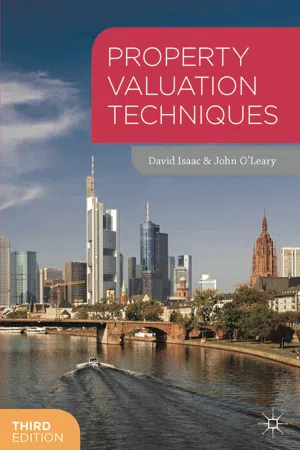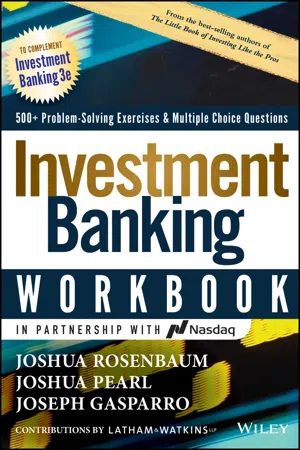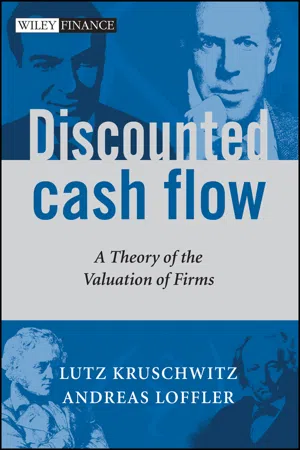Business
Discounted Cash Flow
Discounted Cash Flow (DCF) is a financial valuation method used to estimate the value of an investment based on its expected future cash flows. It involves discounting these future cash flows to their present value using a discount rate, which accounts for the time value of money and risk. DCF analysis is commonly used in investment decision-making and business valuation.
Written by Perlego with AI-assistance
Related key terms
1 of 5
12 Key excerpts on "Discounted Cash Flow"
- No longer available |Learn more
- (Author)
- 2014(Publication Date)
- Orange Apple(Publisher)
History Discounted Cash Flow calculations have been used in some form since money was first lent at interest in ancient times. As a method of asset valuation it has often been opposed to accounting book value, which is based on the amount paid for the asset. Following the stock market crash of 1929, Discounted Cash Flow analysis gained popularity as a valuation method for stocks. Irving Fisher in his 1930 book The Theory of Interest and John Burr Williams's 1938 text 'The Theory of Investment Value' first formally expressed the DCF method in modern economic terms. ____________________ WORLD TECHNOLOGIES ____________________ Mathematics Discrete cash flows The Discounted Cash Flow formula is derived from the future value formula for calculating the time value of money and compounding returns. Thus the discounted present value (for one cash flow in one future period) is expressed as: where • DPV is the discounted present value of the future cash flow ( FV ), or FV adjusted for the delay in receipt; • FV is the nominal value of a cash flow amount in a future period; • i is the interest rate, which reflects the cost of tying up capital and may also allow for the risk that the payment may not be received in full; • d is the discount rate, which is i /(1+ i ), i.e. the interest rate expressed as a deduction at the beginning of the year instead of an addition at the end of the year; • n is the time in years before the future cash flow occurs. Where multiple cash flows in multiple time periods are discounted, it is necessary to sum them as follows: for each future cash flow ( FV ) at any time period ( t ) in years from the present time, summed over all time periods. The sum can then be used as a net present value figure. If the amount to be paid at time 0 (now) for all the future cash flows is known, then that amount can be substituted for DPV and the equation can be solved for i , that is the internal rate of return. - eBook - ePub
- Craig Langston(Author)
- 2013(Publication Date)
- Routledge(Publisher)
CHAPTER 3Discounted Cash Flow ANALYSIS
LEARNING OBJECTIVESIn this chapter you will learn about the technique of Discounted Cash Flow analysis and how it is applied to make comparative judgements about projects. The impact of taxation and its consideration in such studies is also discussed. By the end of this chapter you should be able to:• prepare a Discounted Cash Flow,• understand how taxation is incorporated in the cash flow,• describe the different approaches to discounting, and• calculate and use selection criteria to make investment decisions.CASH INFLOWS AND OUTFLOWS
Discounted Cash Flow (DCF) analysis is a technique for assessing the return on capital employed in an investment project over its economic life, with a view to prioritising alternative courses of action that exceed established profitability thresholds. Investment projects typically span more than one year and hence involve future costs and benefits. Since payments or receipts arising at different times have different worth per unit, their values must be expressed in equivalent dollars before they are comparable. DCF is extensively, although not exclusively, used for this purpose and may be evidenced in a range of economic appraisal techniques in practice.The term cash flow normally represents transactions involving liquid assets, including those that arise from taxation liability, generated by a particular investment project. Cash inflows relate to benefits that are received and which can theoretically be deposited in a bank account, while cash out-flows are expenses incurred in the course of obtaining those benefits. The net cash flow is simply the difference between the cash inflows and outflows and is essentially a function of cost, investment requirement and tax structure. - Edward Fields(Author)
- 2011(Publication Date)
- AMACOM(Publisher)
In addition to the uncertainties and risks involved, the sheer amount of funds involved in a major investment requires that all available facts and issues be identified and evaluated. If additional debt is directly or indirectly involved, the analytical process becomes even more critical. Involving banks or other sources of external financing is often very helpful. Despite current economic events, banks are risk-averse businesses. They will not lend money unless they are convinced of the merits of the proposed investment. Lenders often protect their clients by identifying risks that the clients have not identified or have underemphasized. In this situation, the forecast becomes a selling document as well as a decision-making tool.Discounted Cash Flow
The financial tool that is used to evaluate investment opportunities is called Discounted Cash Flow (DCF) . The different measurements used to evaluate investment opportunities that use this tool in some way are:Internal rate of returnNet present valueProfitability indexPayback periodThe types of investments that can be evaluated with this tool are:Capital expendituresResearch and developmentMajor advertising and promotional effortsOutsourcing alternativesMajor contract negotiations (price, payment terms, duration, specifications)Evaluating new products and businessesBuying another businessStrategic alliancesValuing real estateLet’s start out by identifying a number of key conceptual premises of DCF. 0 means period zero, or the starting point of the project. 1 means one year from the start of the project. 2 means two years from the start of the project, and so forth. A simple example is: 0. ($1,000) cash outflow—(parentheses) 1. $1,020 cash inflow—no parenthesesThis is a profitable investment because the cash inflow exceeds the cash outflow. However, this is not a particularly attractive investment because if the money were put in a local bank, the return might be 5 percent:0. ($1,000) 1. $1,050 The bank deposit is also risk free because the deposit is insured by the FDIC. Therefore, we have already established three basic principles of DCF: 1. It is measuring profitability. 2. Risk issues are incorporated into the analysis. 3. There is an opportunity cost. Projects are judged against alternatives.Profit $ = Interest $
Now consider the following financial relationship: 0. ($1,000) 1. $1,200 If this were a stock purchase and sale one year later, the profit would be $200.- eBook - PDF
- David Isaac, John O'Leary(Authors)
- 2013(Publication Date)
- Bloomsbury Visual Arts(Publisher)
3 D i s c o u n t e d C a s h F l o w 3.1 Introduction 3.2 The cash flow concept 3.3 Discounted Cash Flow 3.4 Interpreting the Net Present Value (NPV) 3.5 The Internal Rate of Return (IRR) 3.6 IRR and investment analysis 3.7 DCF and property applications 3.8 Incremental analysis 3.9 Summary References Self-assessment questions Aims This chapter introduces cash flows and in particular Discounted Cash Flows (DCFs). Using worked examples, the chapter will illustrate how this technique is used generally in a business context before identifying applications to property. The discussion will explain the vocabulary which accompanies DCFs and includes the Net Present Value and the Internal Rate of Return. Key terms >> Discounted Cash Flow (DCF) – a technique which discounts future cash flows to the present date. >> Net present value (NPV) – the net value, which may positive or negative, arising from a DCF appraisal of a project. >> Internal rate of return (IRR) – the discount rate at which the NPV equals zero. 3.1 Introduction Cash flows are an established part of business practice and of course the concept also applies at the micro level to an individual’s or a household’s budget. It is an unfortunate fact that most small businesses fail because they cannot generate sufficient cash flow to survive. Essentially the creditors and financial backers of such firms reach a point where they are no longer persuaded that the future promise of income will overcome current debts. Cash flows are not, however, just instruments for deciding when a business is no longer viable. They can play a 27 more constructive role in identifying company and project viability – how much the company might reasonably be paid for an investment property – and they may provide the evidence which justifies prudent borrowing to enable firms to expand and projects to progress. Cash flows are therefore versatile tools which can be used to support decision-making in a wide variety of contexts. - eBook - ePub
Early Stage Valuation
A Fair Value Perspective
- Antonella Puca(Author)
- 2020(Publication Date)
- Wiley(Publisher)
CHAPTER 6 Discounted Cash Flow MethodJohn Jackmanand Antonella PucaThe Discounted Cash Flow (DCF) method is an income-based approach in which enterprise value is estimated based on the present value of the company's expected cash flows, discounted at a rate that reflects the risk of these cash flows. The credibility of the DCF method lies in a reliable cash flow forecast and well-developed discount rates. The estimate of a discount rate that considers both the prospective of the firm in acquiring its capital resources (cost of capital) and of market participants in pursuing their risk/return objectives (rate of return) is an important step in ensuring that a DCF model for an early stage enterprise (ESE) is reasonable and consistent with fair value principles.This chapter develops a DCF model to estimate enterprise value under the fair value standards of ASC 820/IFRS 13, using a venture-backed ESE as an example. After presenting the model's components and key assumptions in some detail, the chapter shows how a DCF model can be built to reflect the special characteristics of an ESE using a scenario analysis to account for the company's risk of failure. We then discuss how a DCF model can be calibrated to estimate the fair value of the enterprise in subsequent measurement.1 As we walk through our model, we highlight some key considerations concerning the valuation process and the documentation requirements under the Mandatory Performance Framework (MPF).2In his studies of early stage valuation, Aswath Damodaran has underlined the importance of developing a realistic and internally consistent narrative on the company's path to profitability and to a stage of sustainable long-term growth. The company's narrative should translate into valuation inputs and numbers in a model that can be adjusted at subsequent measurement dates as the company and market environment continue to evolve.3In our example, Racoon Inc. (Racoon) is a revenue-generating company that has already completed its Series B round of financing. The company expects significant revenue growth but is still recording net losses due to a sustained level of research and development expenses and significant marketing costs for the commercialization and distribution of its products. A valuation analyst in a venture capital fund is putting together a model to value the company for financial reporting purposes under ASC 820. More than a year has passed since the company's Series B round and the valuation analyst elects to use a DCF model in valuation. The analyst estimates the model's cash flows under two scenarios:4 - eBook - PDF
Investment Banking Workbook
500+ Problem Solving Exercises & Multiple Choice Questions
- Joshua Rosenbaum, Joshua Pearl, Joseph Gasparro(Authors)
- 2021(Publication Date)
- Wiley(Publisher)
As the cost of debt and cost of equity increase, future cash flows and the terminal value are discounted using a larger number. 63) Using a market risk premium of 5.0% vs. 8.0% would result in a higher valuation. A higher discount rate (higher opportunity cost of capital) results in a lower valuation. 64) Benefits of using DCF analysis: ■ Cash flow-based – reflects value of projected FCF, which represents a more fundamental approach to valuation than using multiples-based methodologies ■ Market independent – more insulated from market aberrations such as bubbles and distressed periods ■ Self-sufficient – does not rely entirely upon truly comparable companies or transactions, which may or may not exist, to frame valuation; a DCF is particularly important when there are limited or no “pure play” public comparables to the company being valued ■ Flexibility – allows the banker to run multiple financial performance scenarios, including improving or declining growth rates, margins, capex requirements, and working capital efficiency Discounted Cash Flow Analysis 147 65) Considerations when using DCF analysis: ■ Dependence on financial projections – accurate forecasting of financial performance is challenging, especially as the projection period lengthens ■ Sensitivity to assumptions – relatively small changes in key assumptions, such as growth rates, margins, WACC, or exit multiple, can produce meaningfully different valuation ranges ■ Terminal value – the present value of the terminal value can represent as much as three-quarters or more of the DCF valuation, which decreases the relevance of the projection period’s annual FCF ■ Assumes constant capital structure – basic DCF does not provide flexibility to change the company’s capital structure over the projection period - eBook - ePub
Discounting the Future
The Ascendancy of a Political Technology
- Liliana Doganova(Author)
- 2024(Publication Date)
- Zone Books(Publisher)
There are several ways to calculate rate of return. These different methods are not equally good, and I should like to spend a few moments outlining what I think is the best method. I shall call this method the “Discounted Cash-Flow” method in contrast with what might be termed the “Accounting Method.” The essence of the Accounting Method is to compute a ratio of net earnings to the amount invested. The Cash-Flow Method is far less commonly used for this purpose than the Accounting Method, and there are far fewer variations to it. The mechanics of the method consist essentially of finding the interest rate that discounts future earnings of a project down to a present value equal to the project cost. This interest rate is the rate of return on that investment. (Dean 1953, p. 121)The above quote is taken from an article that Dean published in 1953 in the Journal of Finance and signed with affiliation to both Columbia University and Joel Dean Associates. It advocated the superiority of the rate of return as a measure of investment value compared with the methods that were widely used by companies at that time, such as the payback period.7 The rate of return, Dean argued, was “the only economically valid index of investment value.” It was the tool that the investing manager needed to perform her “function”: “Such an index is an essential part of a good capital management program, since in the last analysis management’s function is to invest the stockholder’s money in ways that will maximize return on it” (Dean 1953, p. 120).Both DCF, the Discounted Cash Flow method, and the accounting method, measured return on investment, ROI, but they did so in different ways. In the DCF method, the rate of return is the “interest rate that discounts future earnings of a project down to a present value equal to the project cost” (pp. 121–22). This method has become known as the internal rate of return (IRR) and it has been criticized since then. The criticism, however, was not addressed at discounting per se, but at the idea that projects should be ranked by their rate of return. This led to the emergence of the alternative discounting method known as NPV or net present value.In NPV and IRR alike, the valuation exercise consists of discounting and summing future cash flows. The difference between the two methods lies in the ways in which the discount rate is determined: in IRR, the discount rate is the result of the calculation (it is the rate at which NPV is equal to zero), while in NPV, the discount rate is an input to the calculation, and projects are ranked according to their NPV, which can be positive or negative. A question arises in both calculations: What is the criterion that allows assessing the rate of return? When NPV is calculated, a criterion is needed to set the rate at which future cash flows should be discounted. When IRR is calculated, again, a criterion is needed to decide, for example, whether a 15 percent return is “good enough” or whether only investments worth 30 percent or more should be made.8 - eBook - PDF
Economic Feasibility of Projects
Managerial and Engineering Practice
- S.L. Tang(Author)
- 2003(Publication Date)
- The Chinese University of Hong Kong(Publisher)
The readers are expected to have a right concept about this. This point will be further discussed in Section 4 of Chapter 5. 3.4 Underlying Principles of DCF Method The DCF method is, similar to other methods previously discussed, based on the discount of future cash flows by taking account of the time value of money. The DCF method, like the equivalent annual cost method, also automatically allows the initial investment to depreciate over the life of the project (see Section 1 of Chapter 2). Since IRR is calculated by equation (3.4), the calculation is in fact based on the outstanding balance (or the undepreciated part) of the capital invested, having allowed for net incomes to offset against the investment. This point might be a little difficult for the ÷ ø ö ç è æ + 275 902 902 3. Discount Cash Flow Method 41 reader to appreciate, but it could be made easier if they look back to Section 5 of Chapter 1. All the five examples illustrated in that section were of IRR = 10% and present worth (or NCF 0 ) = $100,000, where –NCF 0 = 100,000 = which is actually equation (3.4) or equation (3.4a) for n = 5 and i = 10%. What the readers should do is to treat the loan, $100,000, as capital investment and the annual installments as annual incomes. Take the example of Method 1 illustrated in Section 5 of Chapter 1. Readers can treat the problem as one whose NCFs are shown below in Table 3.9: Table 3.9 Summary of cash flows of Table 1.1 End of year NCF 0 –100,000 1 30,000 2 28,000 3 26,000 4 24,000 5 22,000 By the end of the first year the loss due to the cost of the capital, $100,000, amounts to $10,000 (at 10%). $10,000 therefore must be deducted from the first year’s income, $30,000, to cover the loss. A net available sum of $20,000 (i.e. $30,000 – $10,000) is left to be offset against a part of the capital investment, leaving an outstanding balance (or the undepreciated part of the capital) of $80,000 (i.e. $100,000 – $20,000). - eBook - ePub
- Frank J. Fabozzi(Author)
- 2012(Publication Date)
- Wiley(Publisher)
Furthermore, it is not clear how markets would become efficient in the first place, if investors did not attempt to find under- and overvalued stocks and trade on these valuations. In other words, a precondition for market efficiency seems to be the existence of millions of investors who believe that markets are not.Stock-pricing models are not physical or chemical laws of nature. There is, however, a strong principle of investing that must eventually hold true for all firms over time if they are to have a positive value. This principle is that you should always be able, in your mind, to construct some sort of logical connection between a positive stock price today and a stream of future cash flows to the investor. The logical chain might be long. You might assume that years of start-up losses (earnings are zero or negative) will be followed by more years of all profits being reinvested. But you should be able to envision some connection between today’s positive stock price and a stream of cash flows that will commence someday in the future.In this entry, we discuss practical methods of valuing a firm’s equity based on Discounted Cash Flow (DCF) models. Although stock and firm valuation is very strongly tilted toward the use of DCF methods, it is impossible to ignore the fact that many analysts use other methods to value equity and entire firms. The DCF model is the subject of this entry. The primary alternative valuation method is relative valuation (RV). Both DCF and RV valuation methods require strong assumptions and expectations about the future. No one single valuation model or method is perfect. All valuation estimates are subject to model error and estimation error. Nevertheless, investors use these models to help form their expectations about a fair market price . Markets then generate an observable market clearing price based on investor expectations, and this market clearing price constantly changes along with investor expectations.DIVIDEND DISCOUNT MODELThe dividend discount model - eBook - ePub
- Richard A. Lambert(Author)
- 2016(Publication Date)
- Wharton Digital Press(Publisher)
The appropriate discount rate to use is the rate that you can earn in other investments of equivalent risk. When dealing with external markets, this is the market rate of return. Within firms, the rate is often referred to as a hurdle rate or the cost of capital. Although firms are free to use whatever rates they want internally to help them decide which projects to choose, ideally these should be chosen to be consistent with the rates of return demanded in the outside market. In principle, the appropriate rate of return depends on (among other things) the riskiness of the project. Higher-risk projects require a higher rate of return to justify their adoption. Therefore, not all prospective projects in a firm should have their cash flows discounted at the same rate. The discount rate will generally be given to you by the accounting and finance departments; as a nonfinancial manager, it’s unlikely you’ll be expected to determine the appropriate discount rate. For simplicity, in our discussion we will assume the discount rate is constant over time; however, the techniques are perfectly capable of handling time-varying discount rates.3. Convert the cash flows in each period to their equivalent value in some common time period (usually the present) and add up the converted values.
This is called taking the present value. Once you get comfortable with these problems, this step will generally be the easiest part. Calculators and spreadsheets have numerous present-value functions built into them. All you need to do is point to the cells in your spreadsheet where the future cash flows are, tell it what discount rate you want to use, and it does the calculation automatically.Applying Present-Value Techniques to an Investment Decision
We can apply present-value techniques to cash flow streams that vary over time in any pattern, but we’ll consider the prototypical investment scenario in which a cash outlay is made now with the expectation of future benefits. We’ll start with a simple example and then increase its complexity (and realism). The simpler setting will also make it easier to see why it is economically sensible to look at present values.Consider the Google example at the beginning of the chapter, and suppose we are thinking of buying one of the solar panels. Assume solar panels of the size we’re interested in cost $10,000, which we’ll pay for now in cash. The benefits will come in the future from reduced electric bills. The value of these benefits will depend on how sunny it is, the price of electricity, and how long the panels last. We’ll vary the nature of these benefits as we work through the problem to illustrate the key ideas. To start as simple as possible, let’s initially suppose that we expect to get benefits for only one year, and that we’ve estimated we’ll save $10,500 on our electric bill during the first year (the bill is paid at the end of the year). No other cash flows in the firm are affected. - eBook - PDF
Discounted Cash Flow
A Theory of the Valuation of Firms
- Lutz Kruschwitz, Andreas Loeffler(Authors)
- 2006(Publication Date)
- Wiley(Publisher)
Regardless, all known DCF approaches rule out just this source of uncertainty before we even begin. We still have a wide field of research ahead of us. 1.1.3 Cost of capital We do not know if this book’s reader is particularly interested in a precise definition of cost of capital. We are convinced that for a theoretical debate on the DCF methods, it is Fundamental Terms 5 of considerable importance. We would be happy if our reader understood this, or at least developed such an understanding in reading the book. Cost of capital as returns In order to make our considerations more understandable, let us leave out uncertainty. The company that is to be valued promises certain cash flows for the future, which we denote by FCF 1 FCF 2 . We will gain a preliminary understanding of the notion of cost of capital, when we ask about the role the cost of capital should play. It serves for the determination of the company’s value. For this purpose the certain cash flows are discounted with the (probably time-dependent) cost of capital. A valuation equation would look, for example, like the following: V 0 = FCF 1 1 + k 0 + FCF 2 1 + k 0 1 + k 1 + (1.1) where k 0 k 1 are the cost of capital of the zeroth, first and all further periods, and V 0 is the company’s value at time t = 0. In the course of our book, we will see that we repeatedly need an equation for the future value of the firm, V t at t > 0. It would be convenient if equation (1.1) could be used analogously at later times. For that we have V t = FCF t+1 1 + k t + FCF t+2 1 + k t 1 + k t+1 + (1.2) and one obviously gains a computational provision from which such future business values are established. By assuming V = 0 equation (1.2) can be used to infer the relation k t = Def FCF t+1 + V t+1 V t − 1 (1.3) which gives us a basis for a precise definition of the cost of capital as future return. - Pablo Fernandez(Author)
- 2002(Publication Date)
- Academic Press(Publisher)
2 The formulae used in this section are valid if the debt's interest rate matches the required return to debt Kd), or, to put it another way, if the debt's market value is identical to its book value. The formulae for the case in which this does not happen are given in Appendix 21.2. 492 Eight Methods for Valuing Companies by Cash Flow Discounting E 0 D 0 PV 0 [WACC t ; FCF t ] 21 : 1) The de W nition of WACC or ``weighted average cost of capital,'' is given by 21.2): WACC t [E t 1 Ke t D t 1 Kd t 1 T)] = [E t 1 D t 1 ] 21 : 2) Ke is the required return to equity, Kd is the cost of the debt and T is the e V ective tax rate applied to earnings. E t 1 D t 1 are market values. 3 Method 2. Using the Expected Equity Cash Flow ECF) and the Required Return to Equity Ke) Formula 21.3) indicates that the value of the equity E) is the net present value of the expected equity cash X ows ECF) discounted at the required return to equity Ke). E 0 PV 0 [Ke t ; ECF t ] 21 : 3) Formula 21.4) indicates that the value of the debt D) is the net present value of the expected debt cash X ows CFd) discounted at the required return to debt Kd). D 0 PV 0 [Kd t ; CFd t ] 21 : 4) The expression that relates the FCF with the ECF is 4 ECF t FCF t D D t I t 1 T) 21 : 5) D D t is the increase in debt. I t is the interest paid by the company. It is obvious that CFd I t D D t The sum of the values given by formulae 21.3) and 21.4) is identical to the value provided by 21.1): 5 E 0 D 0 PV 0 [WACC t ; FCF t ] PV 0 [Ke t ; ECF t ] PV 0 [Kd t ; CFd t ] 3 In actual fact, ``market values'' are the values obtained when the valuation is performed using formula 21.1). Consequently, the valuation is an iterative process: the free cash X ows are discounted at the WACC to calculate the company's value D E) but, in order to obtain the WACC, we need to know the company's value D E).
Index pages curate the most relevant extracts from our library of academic textbooks. They’ve been created using an in-house natural language model (NLM), each adding context and meaning to key research topics.











